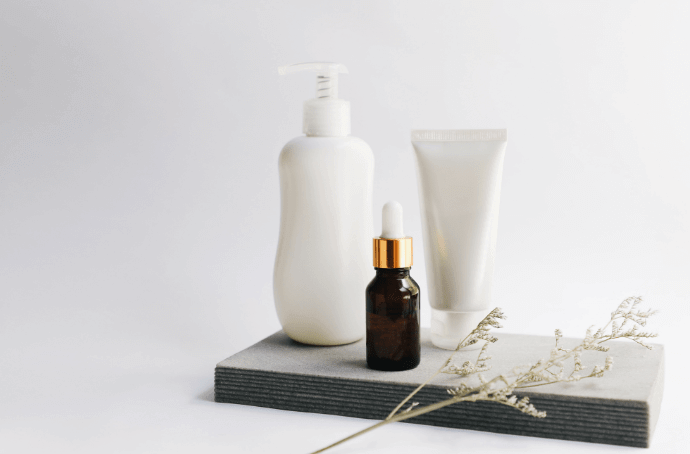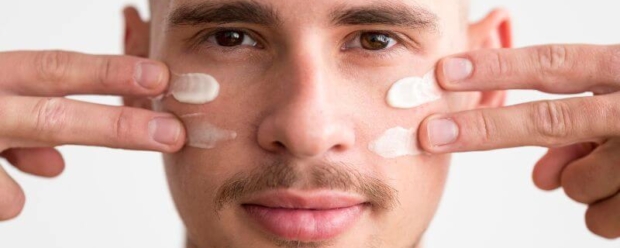We all have heard what happened to Whitney! No?
Let me tell you. Enthusiastically adopting an internet-advised skincare routine, Whitney’s skin took an unexpected hit. The combination of multiple products resulted in redness and irritation, a stark contrast to her typically clear complexion.
Relying on multiple skincare products recommended by internet sources can pose risks to your skin health. Ingredient clashes, overloading, and mismatched formulations may lead to irritation, redness, or breakouts. Skin, being unique to everyone, can react differently to various products. Additionally, internet advice lacks the personalized touch of skincare professionals who can consider your specific skin type and concerns.
Here is where you can find the best professionals who will answer to all your queries.
Internet although sometimes gives us some bizarre advises, sometimes it also comes as rescue.
A recent TikTok sensation, skin cycling, has garnered popularity and, surprisingly, gained recommendations from dermatologists and professionals.
What is Skin Cycling?
Skin cycling involves a skincare routine that allocates the use of specific active ingredients to different nights. These intentional spacing aims to minimize the risk of skin irritation associated with potent skincare, such as retinoids or hydroxy acids, known for enhancing skin cell turnover and exfoliation. Overuse or incorrect application of these actives can lead to irritation, including burning, stinging, dryness, redness, or flakes. Skin cycling also incorporates “rest days,” where no actives are used, prioritizing moisture and skin barrier repair.
Night One – Exfoliation
Opt for chemical exfoliators with ingredients like AHAs, BHAs, and PHAs rather than relying on physical exfoliants and scrubs. Chemical exfoliants are gentler on the skin barrier and often more effective. Their subtle resurfacing action removes dead skin cells, facilitating better penetration of subsequent products, ultimately increasing their efficacy.
Night Two – Retinoid
Retinoids, derived from vitamin A, are potent ingredients known for promoting skin renewal and collagen production. Begin with a lower concentration to minimize potential irritation, and gradually increase use. Remember to follow with a moisturizer, as retinoids can be drying. Due to increased sensitivity, it’s recommended to use retinoids at night and apply sunscreen during the day for comprehensive protection.
Night Three – Rest & Recovery
During your recovery nights, skip exfoliants and retinoids. Instead, apply a nourishing moisturizer or night cream. While one moisturizer suffices, some skin cyclers choose a two-step approach: a light, “everyday” moisturizer followed by a richer cream or sleeping mask layered on top for added hydration.
What are the benefits of Skin Cycling?
- Structures Skincare Routine: Provides a systematic approach for those uncertain about which skincare products to use and when.
- Prevents Over-Exfoliation: Helps avoid excessive exfoliation or the overuse of skincare products with active ingredients, reducing the risk of irritation, inflammation, and compromised skin barrier.
- Introduction of New Ingredients: Particularly beneficial for newcomers to chemical exfoliants and retinoids, allowing a gradual introduction without drying out or irritating the skin.
What can be the possible side effects of Skin Cycling?
- Potential Dryness and Irritation: Newcomers to AHAs, BHAs, and retinoids may experience dryness and irritation when incorporating these active ingredients through skin cycling.
- Increased Photosensitivity: Active ingredients make the skin more sensitive to sunlight, emphasizing the need for consistent SPF application throughout the day.
- Allergic Reactions: We would like to highlight the importance of patch testing new skincare products to avoid possible allergic reactions. Apply a small amount to a small area before using it on a larger skin area.
How soon you will see the results?
If you’re adopting the skin cycling method to gradually introduce retinoids or AHAs/BHAs into your routine, consider increasing the frequency after one month. We suggest a gradual progression, ideally working up to using retinoids once a day or every other day. For chemical exfoliants, we recommend using them up to two times weekly. This incremental approach allows your skin to acclimate to these active ingredients, reducing the risk of dryness, irritation, and other potential side effects.
Here are a few recommendations for your skin type
Dry Skin
- Exfoliator – Glycolic Acid (AHA) Exfoliant
- Retinol – Retinol (Vitamin A) Cream or Serum
- Moisturizer – Hydrating Cream or Lotion with Ceramides and Hyaluronic Acid
Oily Skin
- Exfoliator – Salicylic Acid (BHA) Exfoliant
- Retinol – Retinol (Vitamin A) Gel or Serum
- Moisturizer – Oil-Free Gel or Lotion with Hyaluronic Acid
Normal Skin:
- Exfoliator – Alpha Hydroxy Acid (AHA) Exfoliant
- Retinol – Retinol (Vitamin A) Cream or Serum
- Moisturizer – Balanced Hydration Cream or Lotion with Ceramides
In conclusion, skin cycling stands as a dynamic and adaptable skincare methodology, accommodating diverse skin types and concerns. Emphasizing structure and customization, skin cycling emerges as a strategic approach, promoting healthier, rejuvenated skin. While individual preferences and needs vary, this method offers a versatile solution for those seeking a well-rounded and personalized skincare regimen.


